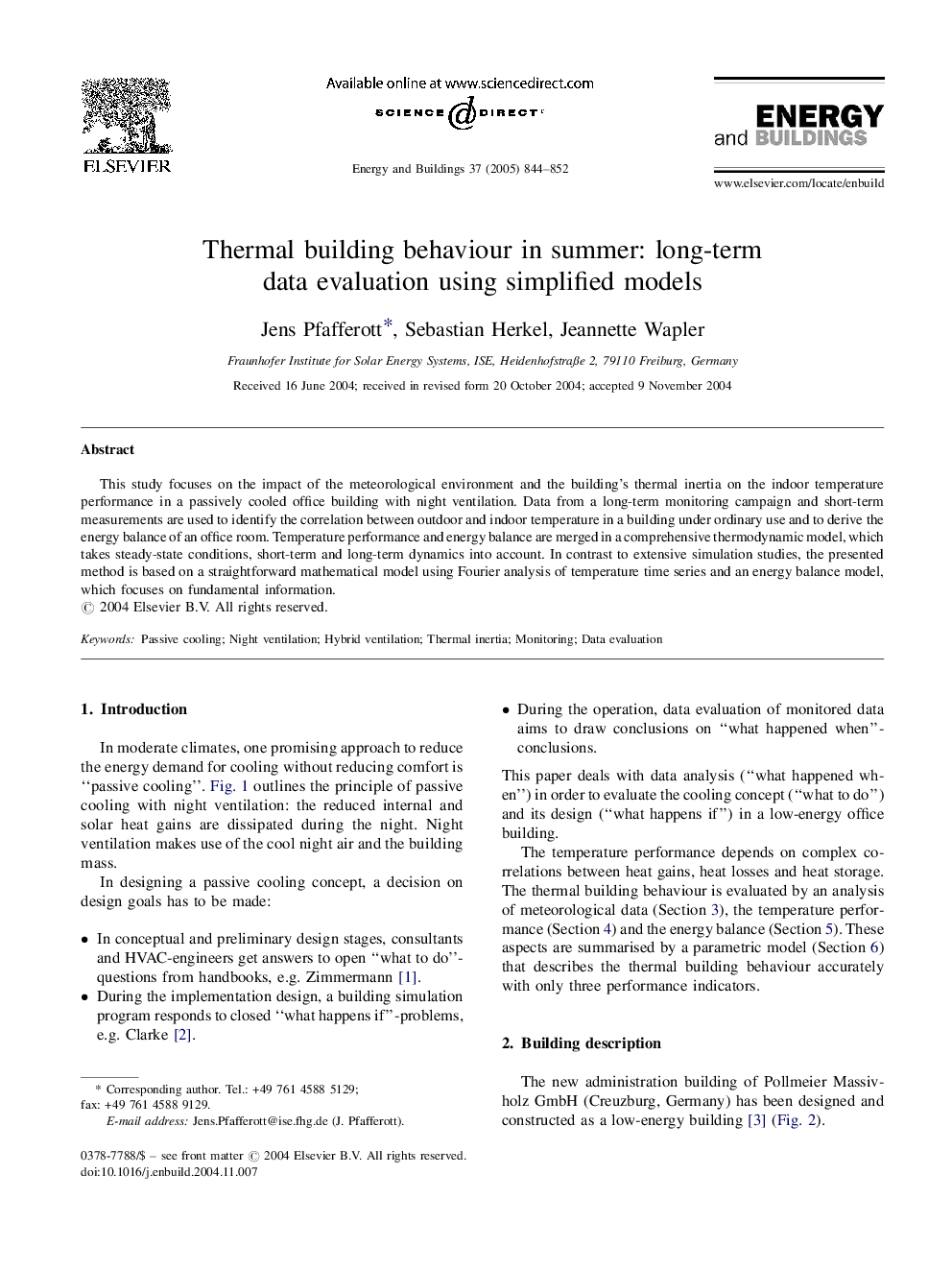| Article ID | Journal | Published Year | Pages | File Type |
|---|---|---|---|---|
| 10286206 | Energy and Buildings | 2005 | 9 Pages |
Abstract
This study focuses on the impact of the meteorological environment and the building's thermal inertia on the indoor temperature performance in a passively cooled office building with night ventilation. Data from a long-term monitoring campaign and short-term measurements are used to identify the correlation between outdoor and indoor temperature in a building under ordinary use and to derive the energy balance of an office room. Temperature performance and energy balance are merged in a comprehensive thermodynamic model, which takes steady-state conditions, short-term and long-term dynamics into account. In contrast to extensive simulation studies, the presented method is based on a straightforward mathematical model using Fourier analysis of temperature time series and an energy balance model, which focuses on fundamental information.
Related Topics
Physical Sciences and Engineering
Energy
Renewable Energy, Sustainability and the Environment
Authors
Jens Pfafferott, Sebastian Herkel, Jeannette Wapler,
